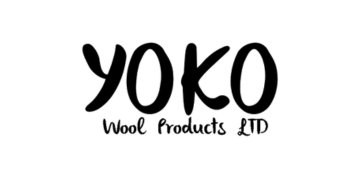The History of Wool: From Ancient Origins to Modern Fashion

Wool has a rich history that spans thousands of years, evolving from its use in ancient civilizations to its prominent role in modern fashion. This article explores the journey of wool, highlighting its origins, historical significance, technological advancements, and enduring popularity.
Ancient Origins of Wool
Wool’s use can be traced back to around 6000 BCE in the Near East, where sheep were among the first domesticated animals. Ancient civilizations, such as the Sumerians and Egyptians, utilised wool for clothing and trade. Wool fibres provided warmth, durability, and comfort, making them an essential material in early human history.
Historical Significance of Wool
Throughout history, wool has been a valuable commodity in various cultures:
- Europe: During the Middle Ages, wool became a cornerstone of the European economy, particularly in England and Spain. The wool trade fueled economic growth and led to the establishment of powerful guilds.
- Asia: In Asia, particularly in regions like Mongolia and Tibet, wool from sheep and yaks played a significant role in traditional clothing and textiles.
The rise of the wool industry in these regions helped shape social and economic structures, with wool becoming a symbol of wealth and status.
Technological Advancements in Wool Production
The production of wool has seen significant technological advancements over the centuries:
- Spinning Wheel: Invented in the Middle Ages, the spinning wheel revolutionised wool production by making the spinning process more efficient.
- Industrial Revolution: The advent of machinery in the 18th and 19th centuries, such as the spinning jenny and power loom, greatly increased wool production capabilities.
- Modern Techniques: Today, advanced technologies, including computerised knitting machines and sustainable farming practices, have further enhanced wool’s versatility and eco-friendliness.
These advancements have not only improved the quality and availability of wool but also expanded its applications in fashion and beyond.
Wool in Modern Fashion
Wool remains a staple in contemporary fashion due to its unique properties:
- Versatility: Wool can be woven into a variety of textures and weights, making it suitable for different types of garments, from lightweight summer suits to heavy winter coats.
- Comfort: Wool’s natural breathability and moisture-wicking properties ensure comfort in various climates.
- Sustainability: As a renewable resource, wool is an environmentally friendly choice that aligns with modern sustainable fashion trends.
Brands and designers continue to innovate with wool, creating stylish and functional clothing that appeals to a broad audience.
Popular Woollen Products from Yoko Wool
While exploring the history and versatility of wool, consider incorporating some of Yoko Wool’s high-quality woollen products into your wardrobe:
- Siberian Slippers: Perfect for keeping your feet warm during colder months.
- Mule Slippers: Ideal for comfortable indoor wear.
- Comfy Slippers: Great for lounging at home with maximum comfort.
- Standard Boots: Durable and stylish, suitable for various outdoor activities.
Conclusion
The history of wool is a testament to its enduring appeal and versatility. From ancient origins to modern fashion, wool has played a crucial role in clothing and culture. By understanding its rich heritage, we can appreciate the significance of wool and its impact on our lives. Explore Yoko Wool’s range of woollen products to experience the benefits of this remarkable material.
